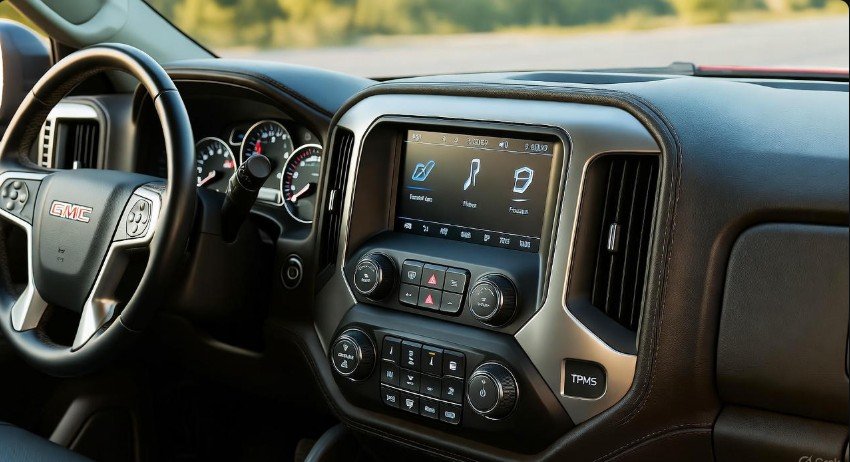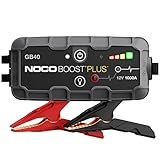Where Is the TPMS Reset Button on a GMC Sierra: Easy to Find Location

Owning a GMC Sierra feels like holding a promise of power, comfort, and road confidence. But even the strongest machines need a little help, especially when it comes to tire safety. One of the most overlooked parts of caring for your truck is understanding the tire pressure monitoring system. If the TPMS alert pops up, it can feel like a small whisper telling you something is off, and many owners instantly wonder one thing: Where is the TPMS reset button on a GMC Sierra, and how do I use it? Think of the TPMS system as a guardian that watches your tires day and night. When its readings get confused, the reset button steps in like a refresh key. Knowing its location saves time, avoids stress, and keeps your Sierra in top shape. In this guide, I will walk you through every detail with a simple tone, just like talking to a friend who owns the same truck.
Understanding What the TPMS Reset Button Does
The TPMS reset button is more than a small piece of plastic. It works like the heart of the system’s memory. When your tires get rotated, replaced, or inflated, the sensors may send mixed signals. That is when the reset button clears old data and asks the system to read fresh information. It behaves like cleaning a blurry mirror so you can see the road ahead with clarity.
When this button is pressed at the right time, your Sierra stops guessing and starts knowing the exact pressure level of each tire. Many drivers ignore this step, but skipping it is like trusting an old map—you might reach the right place, but the chances of getting confused are high. That is why learning its role gives you peace of mind and a safer drive.
Why the Sierra’s TPMS Matters More Than You Think
Driving with low tire pressure is like running with one shoe loose. You can still move, but it feels uneasy and unsafe. The TPMS exists to stop that discomfort before it becomes a danger. The sensors watch for changes and warn you early. Your truck saves fuel, grips the road better, and takes stress off the suspension.
When the system is not calibrated, the warning might show up even if the tires are fine. That false alert is annoying on a busy morning or long trip. Resetting the system helps you avoid those moments. It keeps your truck honest. With a properly working TPMS, your Sierra reacts better to emergency stops, rough terrain, and highway speeds. Simple steps lead to big safety wins.
Where Is the TPMS Reset Button on a GMC Sierra?
Now let’s talk about the part everyone wants to know. The location of the button is simple once you know where to look. Most Sierra models keep the TPMS reset button tucked under the steering wheel. It sits close to the OBD-II port, almost like a secret helper waiting for the right moment. Many people overlook this spot because it looks plain and blends with the dashboard panels.
To find it, slide into the driver’s seat and lean a bit forward. Look toward the lower area beneath the column. You may spot a small round button labeled “TPMS Reset” or “Tire Reset”. Some trims hide it deeper, so you might need to adjust your position. This location keeps it safe from accidental touches, which could confuse the system if pressed at the wrong time.
If you still can’t spot it, your owner’s manual is your best friend. It shows the exact position based on your model year. Different years place it slightly left or right, but always within reach under the wheel.
How to Prepare Before Pressing the Reset Button
Resetting the TPMS is simple, but preparation makes the results accurate. First, check that your tires have the correct pressure. Every Sierra has recommended PSI levels on the door jamb sticker. Inflate them to match that number. Think of this step as setting the stage before the performance begins.
Second, make sure the truck is on steady ground. Park it in a flat space so the system reads even pressure levels. Then turn the ignition to On without starting the engine. This wakes up the electronics without making the engine run.
Taking these small steps keeps the reset process smooth. Without them, the system may read the wrong pressure, and the warning light might come back sooner than expected.
Step-by-Step Guide to Using the TPMS Reset Button
Once your tires are set, you can begin the reset process. The goal is to help the system understand the new pressure. Press and hold the TPMS reset button until the light blinks twice on the dashboard. That blink works like a signal saying the system is listening. When you release the button, the light should stay on for a few seconds before it fades.
After that, take the Sierra for a short drive. The sensors need motion to sync with the control unit. As the truck moves, the TPMS gathers new data and confirms each tire is within the right range. This short drive acts like a handshake, sealing the reset.
Different Sierra years may have slight differences in how long to hold the button. Always check your manual if something feels off. When done right, the warning light stays off, and the system monitors your tires with fresh accuracy.
Common Mistakes When Searching for the TPMS Reset Button
Many owners spend time searching in the wrong places. Some expect the button to be near the center console, while others think it is part of the touchscreen system. That confusion leads to unnecessary stress. Remember, the Sierra keeps the button down low for safety.
Another mistake is pressing the button without adjusting tire pressure first. Resetting at the wrong moment is like writing the wrong answer before checking the question. The system may accept the wrong pressure and warn you again later.
Some drivers rush the process and release the button too soon. If the light does not blink twice, the reset does not start. Slowing down makes the steps easier and more accurate.
Bullet Points: Quick Things to Remember
-
The TPMS reset button is under the steering wheel.
-
Always inflate your tires before resetting the system.
-
Hold the button until the dashboard light blinks twice.
-
Short drives help the sensors finish recalibrating.
-
Use the owner’s manual for model-specific locations.
A Simple Table for Quick Reference
Below is a short table to help you remember key points without reading everything again.
| Feature | Details |
|---|---|
| Button Location | Under steering wheel near OBD-II port |
| Label | TPMS Reset / Tire Reset |
| When to Use | After rotation, replacement, pressure change |
| Blink Count | Light blinks twice before reset |
| Extra Step | Drive the truck to finish calibration |
Troubleshooting When the TPMS Reset Doesn’t Work
Even after following all steps, sometimes the TPMS light refuses to turn off. This can feel frustrating, like doing all the homework but still getting a warning. Common causes include a sensor that has failed, a slow leak in a tire, or a dead battery inside one of the sensors. In rare cases, the system itself may need a software update.
Before panicking, check each tire with a manual gauge. A small pressure discrepancy can trick the system. If everything seems fine, try resetting the button again after a few minutes. Persistence often solves the problem. If the light persists, visit a GMC service center. Technicians can read sensor codes and determine whether a replacement or repair is necessary. The key takeaway is that the button is only part of the solution—the system relies on healthy sensors and correct tire pressure.
Why Resetting the TPMS Improves Driving Experience
You might wonder, why go through all this effort for a blinking light? Resetting the TPMS on a GMC Sierra is about more than dashboard cleanliness—it directly impacts your driving experience. Correctly inflated tires improve fuel efficiency, reduce road noise, and extend tire life. A recalibrated system also prevents false alerts, letting you focus on the road without unnecessary distractions.
Driving with underinflated tires is like walking on soft sand—it saps energy and control. With the TPMS accurately reading each tire, your Sierra handles like it should. This is especially important for trucks carrying heavy loads or towing, where small pressure differences can make a big difference in safety and performance.
Tips to Make Finding the TPMS Reset Button Easier
Even though the button is generally under the steering wheel, here are a few practical tips to locate it faster:
-
Use a flashlight for better visibility under the dashboard.
-
Sit directly in the driver’s seat and lean slightly forward.
-
Look near the OBD-II port—manufacturers usually place it close by.
-
Check your trim level online or in the owner’s manual for exact placement.
-
Avoid pressing other small buttons nearby; some control settings may reset accidentally.
These small strategies save time and prevent frustration, especially for first-time Sierra owners.
Maintaining Your TPMS System
Knowing the button’s location is just the start. Maintaining the TPMS system ensures long-term reliability. Regularly check your tire pressures, especially before long trips or seasonal changes. Rotate tires according to the manufacturer’s schedule. Keep the sensors clean, as dirt and corrosion can interfere with their readings.
In addition, consider replacing sensors every 5–10 years, depending on your driving habits and environment. Replacing old or weak sensors prevents unexpected warning lights and keeps your Sierra performing at its peak. A healthy TPMS system is like having an attentive co-pilot that never sleeps.
FAQs About the TPMS Reset Button on a GMC Sierra
1. Where exactly is the TPMS reset button located?
The button is usually under the driver’s side dashboard, close to the steering column and near the OBD-II port. Some models place it slightly to the left or right, so checking your manual is advised.
2. How long should I hold the reset button?
Press and hold until the TPMS light blinks twice. Releasing it too early may prevent the system from registering the reset.
3. Can I reset the TPMS without inflating the tires first?
It’s not recommended. Incorrect tire pressure can lead to false readings and repeated warnings.
4. How do I know the reset worked?
After releasing the button, the light should illuminate briefly for a few seconds and then turn off. A short drive ensures full calibration.
5. What if the TPMS light stays on after resetting?
Check for underinflated tires, faulty sensors, or a slow leak. If the problem persists, visit a GMC service center.
6. How often should I use the TPMS reset button?
Typically after tire rotation, replacement, or pressure adjustments. Frequent unnecessary resets are not advised.
7. Can I damage the TPMS by pressing the button too much?
Pressing the button excessively does not usually damage the system, but it’s unnecessary and can cause temporary false alerts.
8. Is the TPMS reset button the same on all GMC Sierra trims?
While the function is the same, its exact location may vary slightly depending on the year and trim level. Refer to your vehicle’s manual for guidance.
Conclusion
Finding the TPMS reset button on a GMC Sierra is simpler than most drivers think, but knowing how and when to use it makes all the difference. It’s a small button with a big impact, acting as the system’s memory refresh. Resetting it ensures your tires are correctly monitored, boosting safety, fuel efficiency, and driving confidence.
Always start by checking your tire pressures, locate the button beneath the steering wheel, and follow the simple steps to reset. Remember, a properly maintained TPMS system is like having a guardian watching your tires at all times. Treat it with care, and your Sierra will reward you with smooth, confident, and worry-free drives for years to come.






